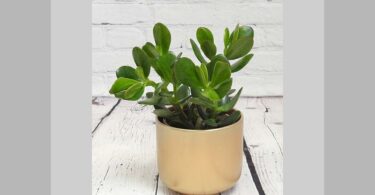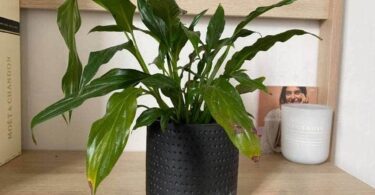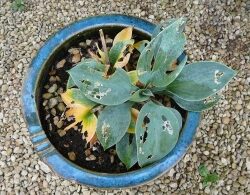Radko Tichavsky is a Czech born Mexican Agrohomeopath. He is a co-founder and director of Instituto Comenius in Mexico and author of Handbook of Agrohomeopathy, 2007 (Spanish) and Homeopathy for Plants, 2009 (Spanish) and creator and teacher of Holohomeopathy.
Agrohomeopathy Course!
Radko Tichavskyi is now offering a one semester virtual course in Agrohomeopathy (in English). You can learn how to define and analyze holons and how to repertorize the specific homeopathic treatment beyond just disease or pest names. You can find out more here: www.icomenius.edu.mx
A Materia Medica and Repertory for Plants: Mark Moodie hosts the website “Considera”, which provides a growing M.M and Repertory for plants and discusses resources for biodynamics and Agrohomeopathy .The website allows the world community to contribute their experiences in planting.
Dear Mr. Tichavsky
I’m a homeopathic doctor, working for the welfare for humans. My source of income is a mango farm. Here we have a mango disease which is called sudden death. The main cause of this disease is a beetle bug. It lives there and lays down its eggs. Larva and eggs block the arteries and veins of the tree. When the tree is fully affected by this, it dries down in two or three days. Can you suggest how we could get rid of this disease?
Thank you sir
Dr Zulqarnain Niza Manii
Radko Tichavsky:
Dear Zulquarmani,
The disease called “sudden death” or Mango sudden decline syndrome (MSDS) is caused by a particular mixture of fungus (Ceratocystis fambriata, Lasiodiplodia theobromae, Nattrasia mangifera, Fusarium oxysporum) transmitted by bark feeding insects (Coleoptera) or by unclean instruments of pruning, with a very aggressive and quick pathogenical process. You can apply in the soil Daucus carota (elaborated from roots) at 6 CH, Ganoderma applanatum 6 CH, and monthly Lantana camara 6 CH (elaborated from inmature fruits) with sap of Opuntia ficus indica as coadyuvant.
You should not use artificial or synthetic fertilizers as they often contain traces of heavy metals, which in the long term cause malnutrition of the trees and the bad biodisponibility of the macro and micro nutrients. This imbalance at the same time marks the trees as predisposed for the entry of pathogens that are cohabiting in the insects that feed on the bark and sap of the tree. Here one of the Hahnemanian precepts clearly applies: all diseases (except those caused by mechanical damage) originate in disorders in the dynamis vital, and as a consequence the pathogens appear in response to this active call of the tree to recycle him. The tree that shows signs of weakness or imbalance in its dynamis vital is destroyed to preserve only strong individuals fit for the correct genetic succession.
In case of death of trees, they have to be burned to destroy spores of the fungus and apply vigorous solarization, covering the soil around the cuted death trees with black plastic for two months before planting new trees.
Dear Sir.
I am a planter and a tea manufacturer based in the North Eastern part of India (Assam) which accounts for over 70% of the total Indian tea (around1233 million kgs.) India being the world’s second largest producer of tea has more than 564 thousand hectares of tea plantations under more than 425 tea estates. Camellia sinensis, as with other crops, has a few pests and diseases which call for extensive use of pesticides and fungicides in tea plantations. This incurrs huge costs and leads to harmful chemical residues in tea. The ever evolving pests become resistant to the chemicals and force us to increase the dose or use harsher chemicals.
Though I am not a homeopath (I am an agriculturist) I have faith in that healing system and believe it can contribute in our tea plantations in a big way, As I have access to tea plantations, I can conduct trials.
The few pests which inflict tea are:
1) tea mosquito bug (helopeltis theivora ) – punctures and sucks sap from young shoots and leaves black spots on the young bud and leaf.
2) Red spider mite (oligonychus coffeace) – sucking type, red in color.
3) Tea looper (biston suppressaria) – a caterpillar that eats away the foliage and causes heavy losses.
Besides these three major pests other ones like thrips, aphids and fungal infestations like red rust, brown rot etc. are also commonplace.
Tea being a high value cash crop, the scope of agrohomeopathy can do wonders both in terms of economics and environment. I request you to kindly guide me so that I can be the agent of change and bring happiness into the lives of millions of tea workers and tea drinkers.
Thank you
Ashish barthwal
Kaliapani tea estate –Nahurkatia – District Dibrugarh, Assam, India
Radko Tichavsky:
Dear Ashis Barthwal,
Until now there were few homeopathic experiences in the cultivation of tea in large growing areas. Agrohomeopathic remedies such as Zea mays, Glycine max, Vitis vinifera, Apium graveolens, Malus domestica, or Zingiber officiale are known as beneficial for different symptomatology of tea culture, corresponding to the principle of metabolic similarity.
For Helepeltis theivora, you can use Melia azedarach 6 CH, Cledodendrum viscosum 6 CH, Ricinus communis 12 CH and Telenomus sp. 4 CH (Platygastridae). It can be applied as a preventive remedy before budding of the new leaves. It is possible to apply Calcarea carbonica 6 CH preventively.
For Oligonychus coffeae, red spider mite, you can apply Sulphur 6 CH applied by spraying with a little oil of Rosmarinus officinalis as an adjuvant. Applications should be made in the afternoon, when the sun decreases its activity.
The Tea looper Biston suppressaria can be controlled with the applications of Apium graveolens at the 6 CH potency with Mentha spicata oil as an adjuvant and can be preventatively sprayed with bionosode from Apanteles sp. 4 CH of the Braconidae family. In general, it is necessary to observe a rigorous mulching and intercalate the tea plants with Rosmarinus officinalis or Mentha spp. and Ocymum basilicum, avoiding monocultures as this is considered by the holon as an imbalance.
Greetings Mr. Tichavsky,
During construction work on some houses, the builders dug up several Thuja trees and offered them to me. There was some traumatic damage to the roots while digging up the trees. Is there a remedy that will give these trees a better chance to survive? We are in North America with a moderate climate.
Thank you
Brian
Radko Tichavsky:
Dear Brian,
You can apply Arnica montana 6 CH on the soil, also Mentha sp. 6 CH sprayed on foliage and also Hypericum perforatum 6 CH.
Dear Mr. Tichavsky,
I have a Mullatha tree. It has many flowers, but no fruits. Can you make any suggestions for getting fruits?
Thank you
Al Jackson
Radko Tichavsky:
Dear Al Jackson,
The lack of fruit formation can happen due to several factors. The most frequent is reason is imbalance of nutrition and deficiency of Calcium and Boron. You can apply Borax 6 CH and Calcarea phosphorica 6 CH sprayed foliarly before the flowering. Sometimes it is also due to the presence of fungi Colletotrichum gloesporoides, Botritis spp. Phytopthora spp. In this case you could apply Zincum metallicum 6 CH foliar sprayed before the flowering with Opuntia ficus-indica sap as adjuvant. Sometimes insects can also be the cause, for example ants, or Laspeiresia sp., Toxoptera aurantii, Aconophora concolor and others insects. Additionally, this tree requires a vigorous action of pollinating insects, so it would be a good idea to place boxes of bees under the trees or apply a bit of royal jelly 6 CH at the time of flowering on the flowers to attract them and invite them to pollinate vigorously.






Dear Radko, I have a Pitanga tree for about 13 years. It flowers regularly but produces only few fruits. It looks healthy and is about 4-5m tall. Another pitanga a few meters away in a pot produces great fruit. I added phosphorus 30CH, how should I proceed. There are ants that dont respond to camphor 30CH but lactic acid 0.01% always works (great remedy for termites). Borax + Cal Phos as you mentioned previously? Thnx
Salvador Brasil